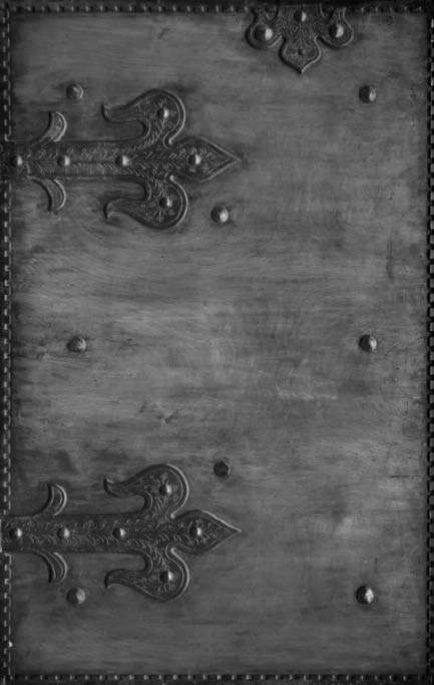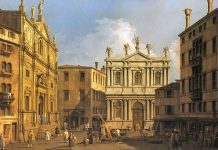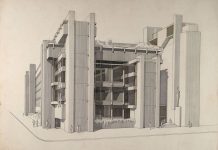A number of 19th-century British architects and designers turned away from industry to create a revival of craft-based architecture using local materials. The resulting Arts and Crafts movement was especially strong in England in the last three decades of the 19th century, but its influence was also felt in Europe and, especially, in the USA.
The Victorians were great technologists and restless inventors. Their inventiveness had a huge impact in the construction business, bringing widespread use of materials such as iron in building and developing a range of machines, from steam hoists to improved saws, that made construction faster, easier and more efficient.
But for much of the Victorian period, architects were preoccupied not with technology but with arguments about style. Those who favored Gothic battled with the classicists; among the “Goths” debates were rife about which version of Gothic was best; and there were those, rejecting either approach, who preferred the round-arched style of the Normans or the Tudor style that lent itself so well to quaint, timber-framed cottages.
A new start
But toward the end of the 19th century a new attitude emerged. Industrial architecture, the argument went, was ugly and inhuman; past styles had more to do with pretension than what people needed in their homes. Instead of these approaches, why not look at the way ordinary country builders worked in the past? They developed their craft skills over generations, demonstrating mastery of both tools and materials. Those materials were local, and used with simplicity—houses built this way had plain wooden floors and whitewashed walls inside. But they supplied people’s needs perfectly and, at their best, had a beauty that came from the craftsman’s skill and the rootedness of the house in its locality.
William Morris
The person who led the way in arguing for houses like this was the multitalented designer, artist, writer, teacher and manufacturer William Morris. Morris was not an architect, although he spent a few months working in the office of the great Gothic architect G. E. Street and knew the world of architecture well. And he made it his business, through his work as a manufacturer and designer of all types of items, from fabrics to furniture, to know how craftsmen worked and what they could produce.
Truth to materials
One of the presiding ideas of the Arts and Crafts movement was an interest in, and respect for, materials. From wood to stone, metal to brick, materials were selected with care, preferably from local sources. And finely-forged ironwork (see below) or hand-made bricks were not to be covered up—where possible, their beauty should be left exposed so that all could appreciate it. Thus was born the idea that a building should be “honest,” that it should not hide its construction and that it should be, in the phrase popular among both Arts and Crafts and modernist designers, true to its materials.
Morris spread the word through his writing and lecturing, and by selling the products of his firm—beautifully crafted decorated chests, floral wallpapers and fabrics, some still made today. Other pioneers, including architects such as his friend Philip Webb and the prolific R. Norman Shaw, spread the ideals, especially Shaw, who ran a large office that contained several young men who embraced Arts and Crafts ideals. The Arts and Crafts movement was underway.
Profession or craft?
Discussion groups, associations and guilds were formed to discuss the relationship of arts, crafts and architecture. There was something provocative about these discussions because this was a time when many architects were arguing that their work should be a profession—that architects should have the status of doctors or lawyers. It was a case hardly helped by a group of revolutionaries arguing that architecture was not a profession at all, but a craft—like carpentry or ceramics.
However, during the last two decades of the 19th century at least, the revolutionaries demonstrated that they had a point. A succession of stunning houses built using craft techniques, traditional materials and Morrisian principles emerged. Architecture began to look more rooted in locality and site, less cluttered, less formal, than it had for decades. And, although the movement was in many ways a revolt against style, an Arts and Crafts style emerged.
“Have nothing in your houses that you do not know to be useful or believe to be beautiful.” William Morris
The style was exemplified, in domestic architecture, by the work of architects such as M.H. Baillie Scott and C.F.A. Voysey. Outside: long, low, asymmetrical structures, sweeping roof lines, large bay windows. Inside: exposed wooden floors, pale walls, big inglenook fireplaces, beautiful hand-crafted details, such as specially designed door catches or runs of wooden paneling. There was an impeccable logic to all this, too—the asymmetry came from a desire to let the best, most convenient plan dictate the shape of the building; the handcrafted finish from an overriding respect for the materials themselves.
Craft guilds
One place where architects and craftsmen came together to discuss each other’s work was the craft guilds—specialist societies of which several were founded in the 1880s to promote craftsmanship. The Art Workers’ Guild, founded in 1884, was a group including artists, architects and craft workers that met for lectures, discussions, demonstrations of techniques and exhibitions. By contrast, C.R. Ashbee’s Guild and School of Handicraft, founded in London in 1888 and moving in 1902 to Chipping Campden in Gloucestershire, was a working body of craftsmen who, in their country home, aimed to revive both the crafts and the skills of husbandry.
To begin with this type of design was available mainly to the rich: people who could buy Morris’s hand-made objects and who could afford the cost of a one-off house. But the influence lived on and did eventually affect the design of many smaller houses when garden suburbs, such as London’s Bedford Park (see Deconstructivism), came to be built.




















